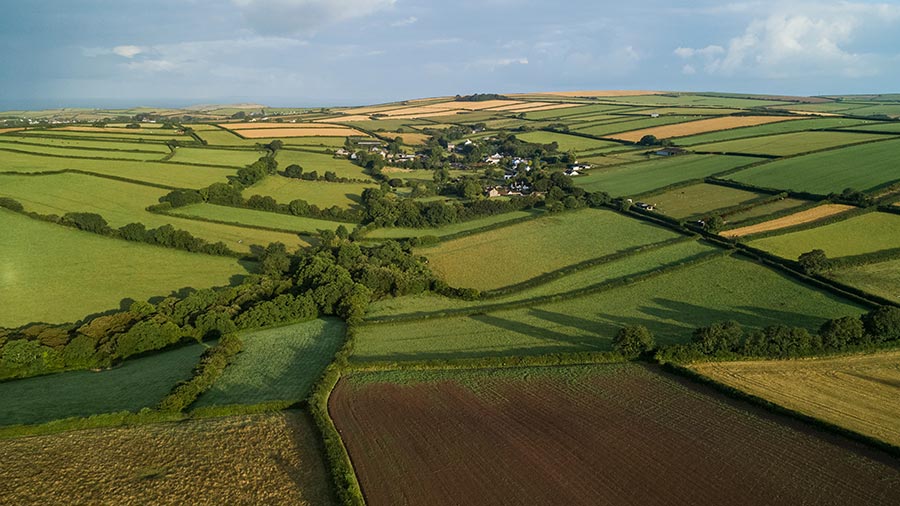New map provides first accurate baseline of UK hedgerows
 © Lightning Strike Pro/Adobe Stock
© Lightning Strike Pro/Adobe Stock Researchers at the UK Centre for Ecology and Hydrology (UKCEH) have used aerial laser scanning to reveal a total of 390,000km of field hedges in England, providing the first accurate baseline of the hedgerow network.
It has been estimated that half the country’s hedgerows were lost between the 1940s and 1990s in response to government policies.
But while this trend has been reversed, the researchers say lack of maintenance has led to “gappy” hedges and overgrown lines of trees.
See also: Strong farmer support for hedge planting – if it pays
Lead researcher Richard Broughton said: “The new map enables us to see where hedgerows are sparse and identify sites for targeted planting and restoration efforts, linking up habitats and improving the hedgerow network.
“It can also be used to estimate the potential amount of carbon that hedgerows could remove from the atmosphere and store.”
Low-flying aircraft
The new map – which forms part of the AgZero+ programme funded by UK Research and Innovation – was created by flying aircraft over the whole of England between 2016 and 2021, scanning the ground with sensors.
As well as the 390,000km of hedges between 1m and 6m in height (enough to go around the world 10 times), the scanners identified another 67,000km below 1m, thought to be degraded, cut or newly-planted hedges.
A further 185,000km of hedges above 6m tall were identified – mainly mature hedgerow trees and overgrown hedges.
In its Environmental Improvement Plan, the government has pledged to support farmers to create or restore 48,300km of hedgerows a year by 2037 and 72,400km a year by 2050.
The greatest density of hedges was found in Cornwall, while the lowest density was found in Surrey.
New podcast
To delve deeper into the value of hedges, the UKCEH has launched a new podcast, called Counting the Earth.
It includes an interview with Devon farmer Robert Wolton, who describes how a two-year study of a single hedge near his house revealed more than 2,000 species, including 12 different shrubs, a vast number of insects, and more than 60 “rare” species such as hazel dormice and willow tits.
Farmers keen to plant more hedges
Farmer enthusiasm for hedgerow management has been highlighted by a new survey looking at the ways farmers bolster biodiversity.
Undertaken by meat processor ABP and retail giant Asda, the survey drew responses from about 250 farmers across the country
The results show that, on average, each farmer is responsible for just over 8km of hedgerows – though one farmer reported having more than 80km of hedges on his farm.
With increasing grants now available for hedgerow planting, both through government schemes and private initiatives, it emerged that more than half of those surveyed had planted an average of 879m each in recent times.
Some 41% of the farmers surveyed said they carry out wildlife surveys to monitor populations and species.
Chris Brown, senior director of farming at Asda, said: “The farmers’ data in the survey highlights their enthusiasm to demonstrate their environmental achievements, their attitude to biodiversity and its value to their farms.”
